For some people, a collision with a moose marks a permanent end to their driving days. Forever. But one year after his own encounter with the king of the forest, Joel Skoglund from the little Swedish town Nora proudly stands as the owner of a bold, newly restored and extremely stylish 1968 Plymouth Barracuda.
“I probably have the American brakes to thank for making it out alive,” he says with a crooked smile. “They caused the car to skid, and I ended up clipping the moose with the rear end of the Barracuda. Moose are pretty big animals when you’re sitting in a car. If I had hit it head-on, I probably wouldn’t be standing here today.”

We meet at the Orsa Drag Fest, where Skoglund is doing some quarter-mile runs. Since there’s a chassis dyno on site, he takes the opportunity to test the power output of his recently built engine: 439 horsepower at the rear wheels.
So, without exaggeration, I can say this: No matter how bad the news you receive, you can always turn it into something good.
But let’s start from the beginning.
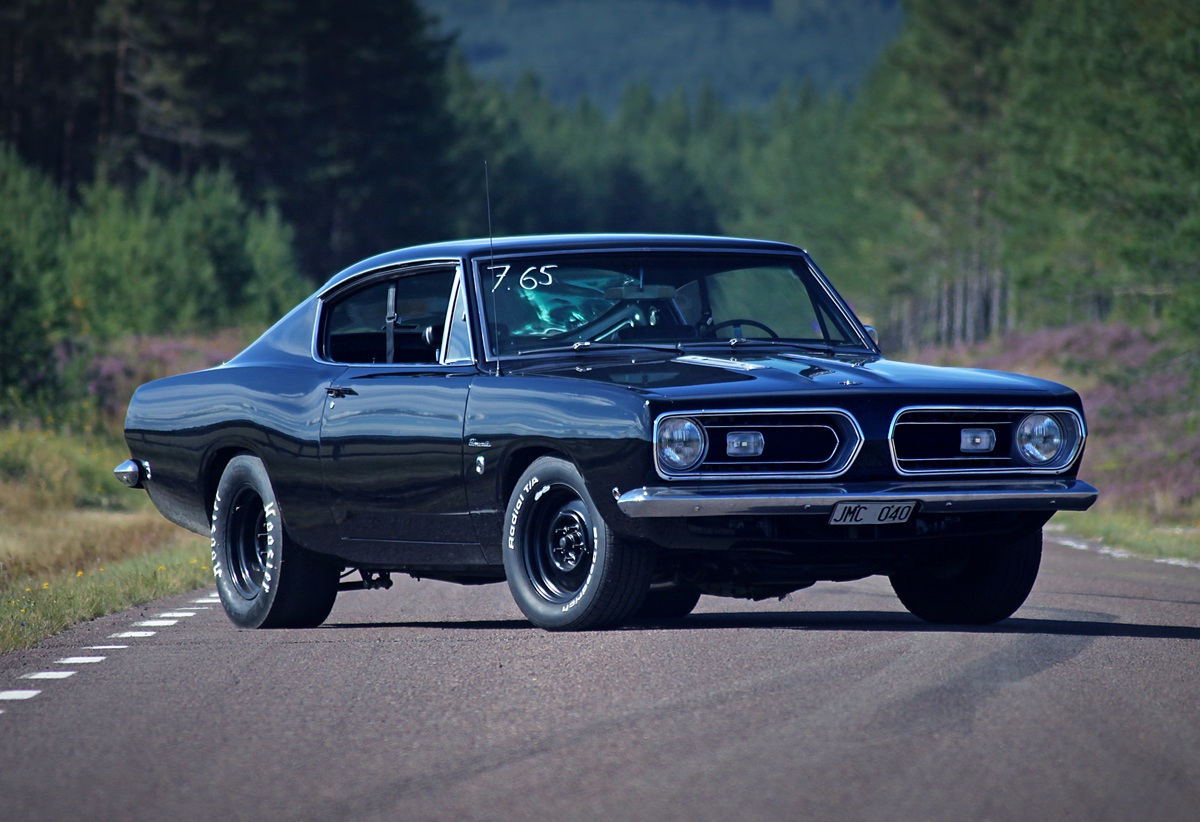
Skoglund acquired the Barracuda in the spring of 2010. At the time, it was a classic old cruiser, equipped with a 273 engine, a 904 transmission and a 7¼-inch rear axle with a 3.23:1 gear ratio. Nothing to write home about, in other words – but a fine car to drink a few beers in.
“The car was painted some kind of Cadillac color, like pink. If you can even call it pink, ha ha. It certainly wasn’t pretty. It was right after I had swapped in a tuned 273 cui engine and a four-speed manual gearbox that I hit the moose,” he says.
This happened in the fall of 2010, and since the insurance payout was generous, Skoglund decided to handle the repairs himself. That’s when things started to spiral, and the car was torn down to the bare shell. The entire body was sandblasted and restored.
The very first thing Skoglund did after the crash was buy parts. It didn’t take long before his account was, at least temporarily, emptied.
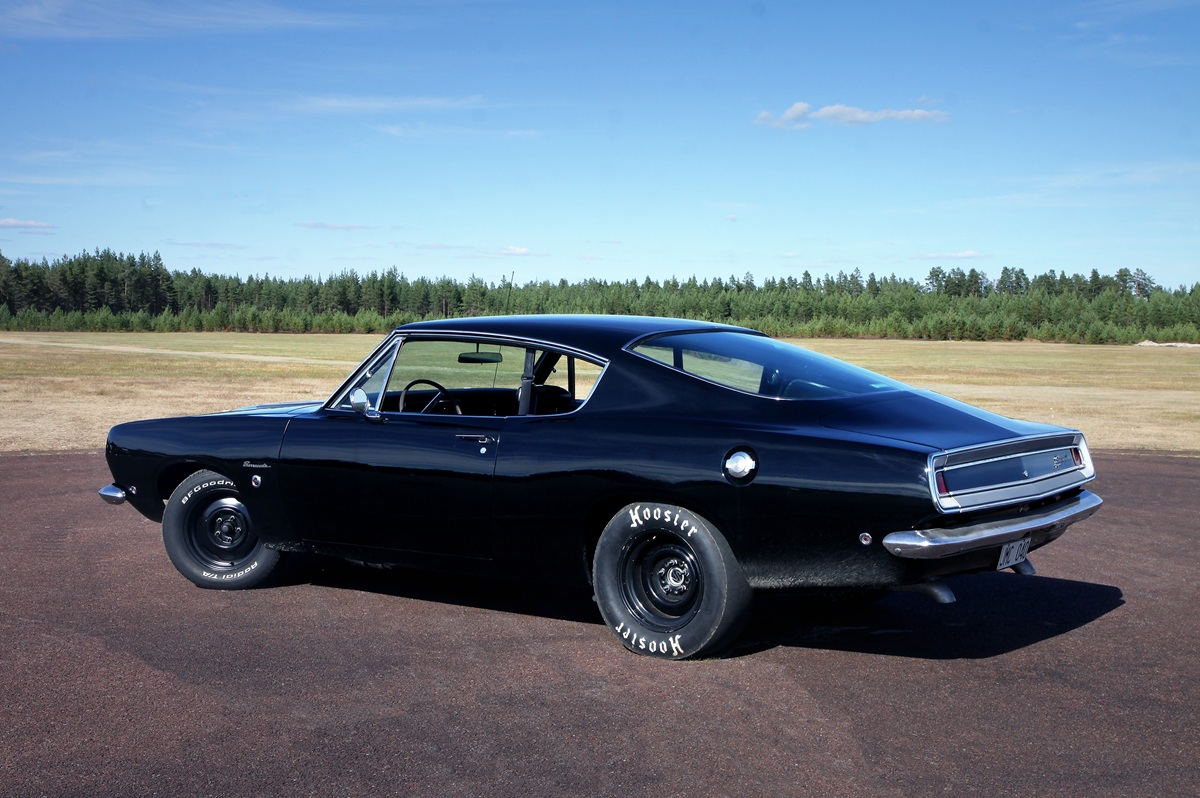
“The insurance money was already gone before I even started repairing the crash damage,” he says.
Fortunately, the body turned out to be in good shape. Mechanically, however, the condition was another story.
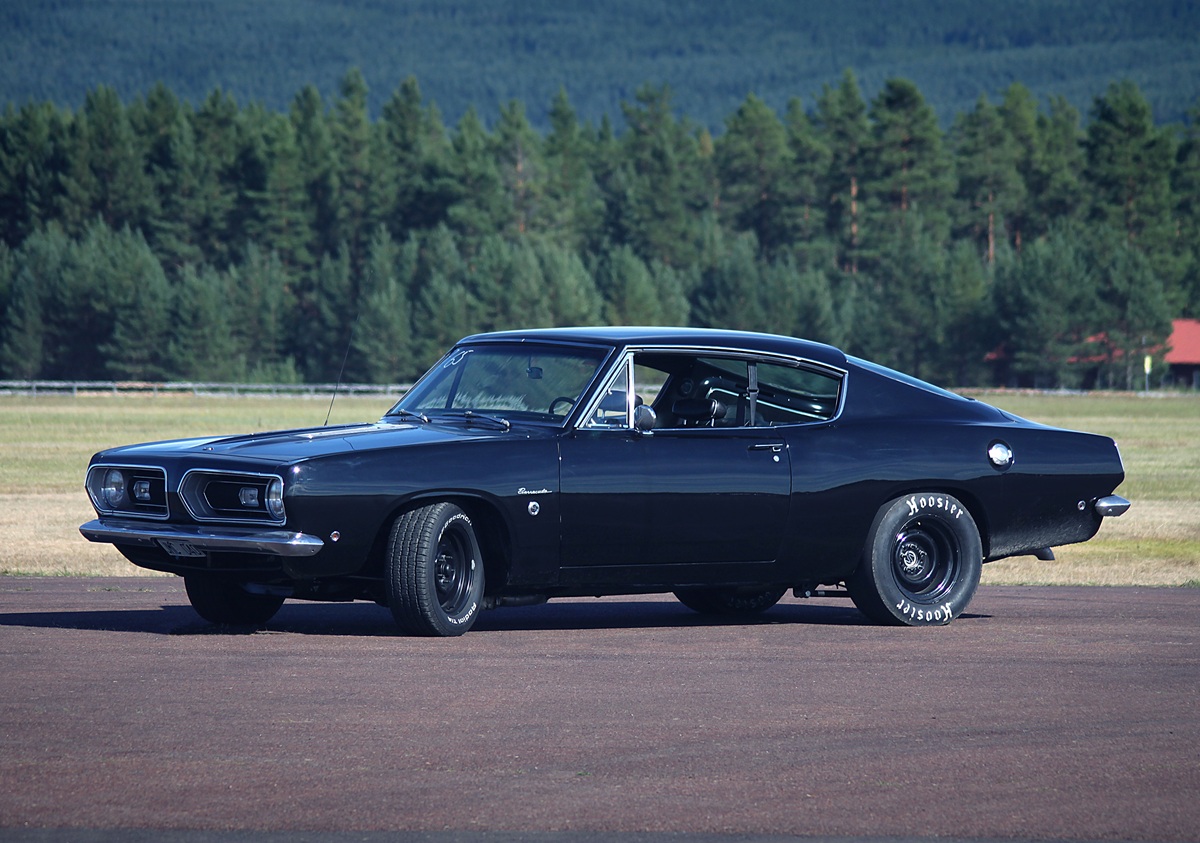
“I noticed the Barracuda had already been restored once before, so the bodywork was fairly decent. Probably done by a paint shop – someone who wasn’t particularly skilled with the mechanical side of things, since that part was a disaster,” Skoglund says.
So out went the chassis and drivetrain, and in went brand-new components.
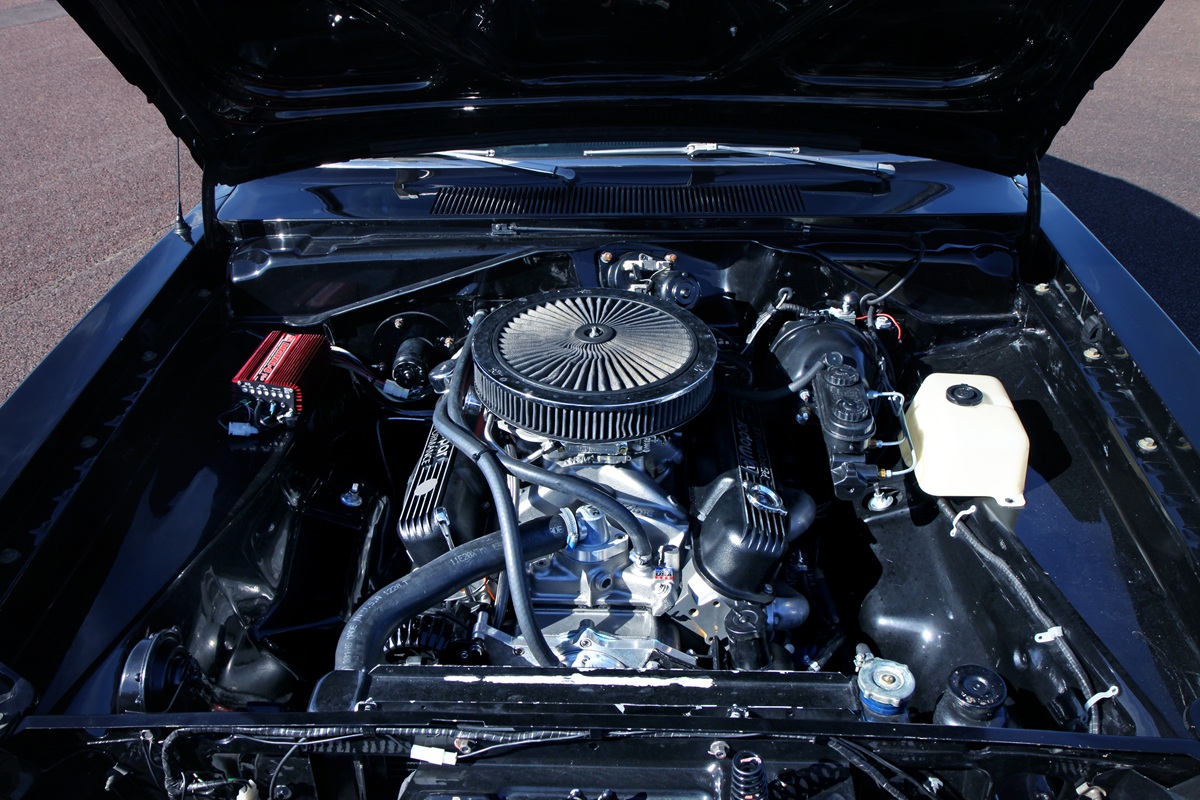
“Today, the Barracuda runs a 360 stroked to 408 cubic inches with a crankshaft that has a 4-inch stroke. A pair of RHS iron heads are mounted – heads that I’ve ported myself. The compression ratio is about 11:1,” he says.
He adds that it’s not a wild, high-strung race build, and that he runs two different carburetors: one with 960 CFM and one with 750 CFM. Both are tuned for E85, the fuel he runs the Barracuda on.

“Honestly, I can’t say I notice much difference between the two carbs. The 950 CFM makes just as much power and uses the same amount of fuel as the 750,” he laughs.
Fuel consumption sits below 20 liters per 100 kilometers (roughly 12 MPG) on the highway, which is quite respectable considering E85, a 950 CFM carb and a 408-cubic-inch engine.
The engine also features JE pistons, a 4340 crankshaft from K1 Technologies and a mechanical camshaft (which he already had on the shelf) paired with solid lifters.
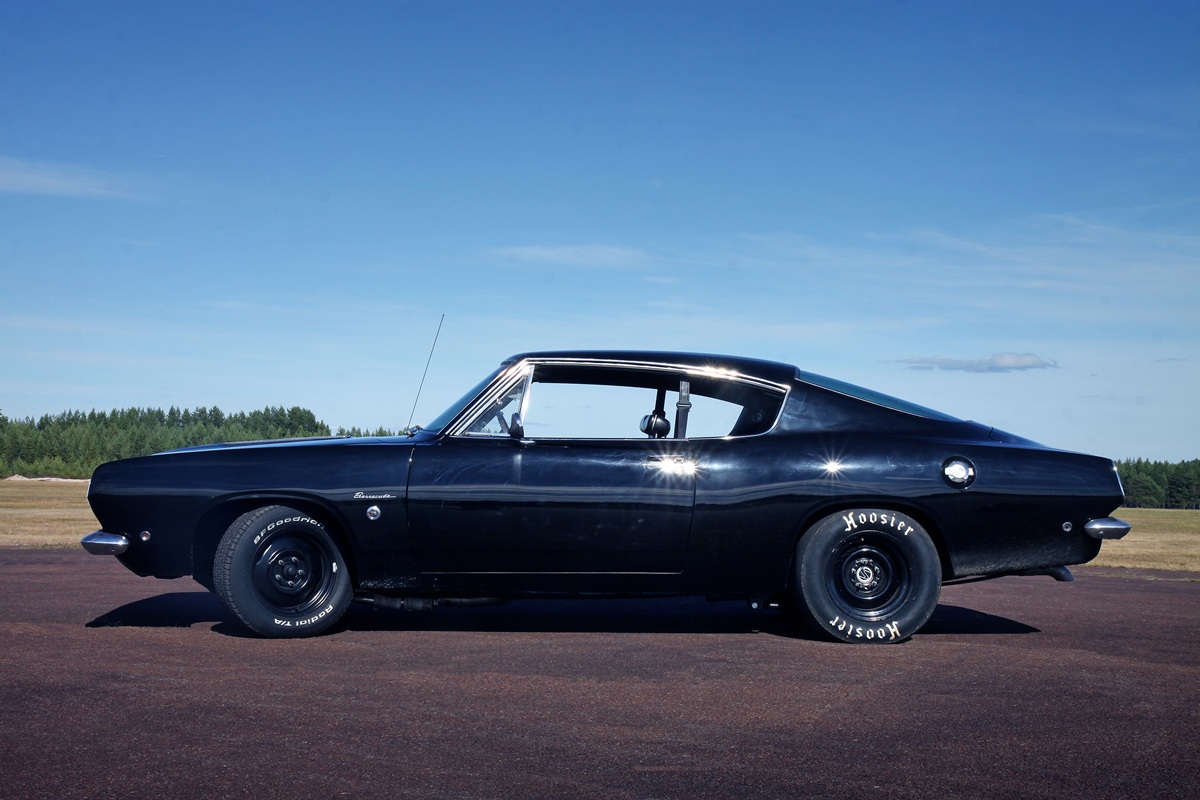
Behind the engine sits an A833 four-speed transmission and a Dana 60 rear axle with a 3.73:1 gear ratio.
Altogether, the rebuild and fabrication took two years – twice as long as originally planned.
“My goal was to be done in one year, but it ended up taking twice that long,” Skoglund says.
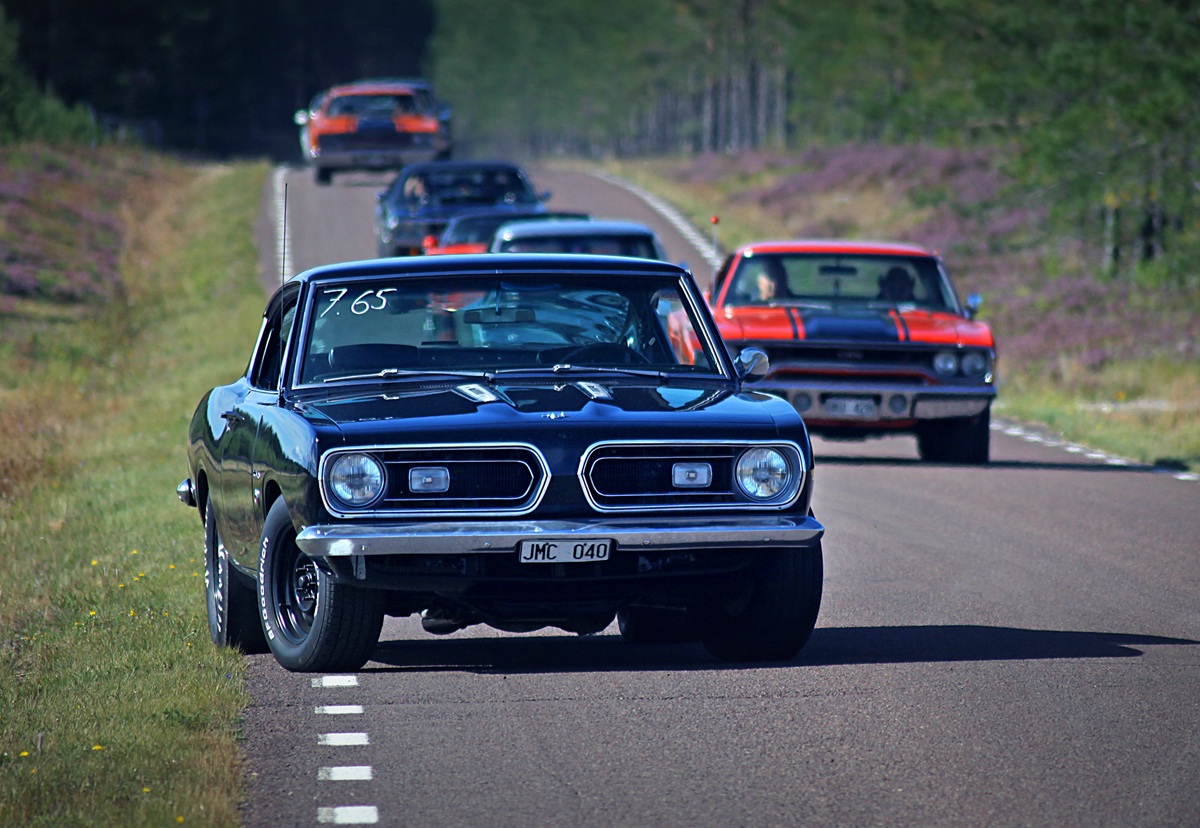
And the result? Let’s put it this way: I’m impressed by the finish and the eye-catching engine bay. I love the way Skoglund drives the Barracuda, how quickly it blasts down the airstrip at Tallhed Airfield outside Orsa.
So impressed, in fact, that I forget to check whether the Barracuda even has a roll cage, or if there’s room for more than one person during the photo session.
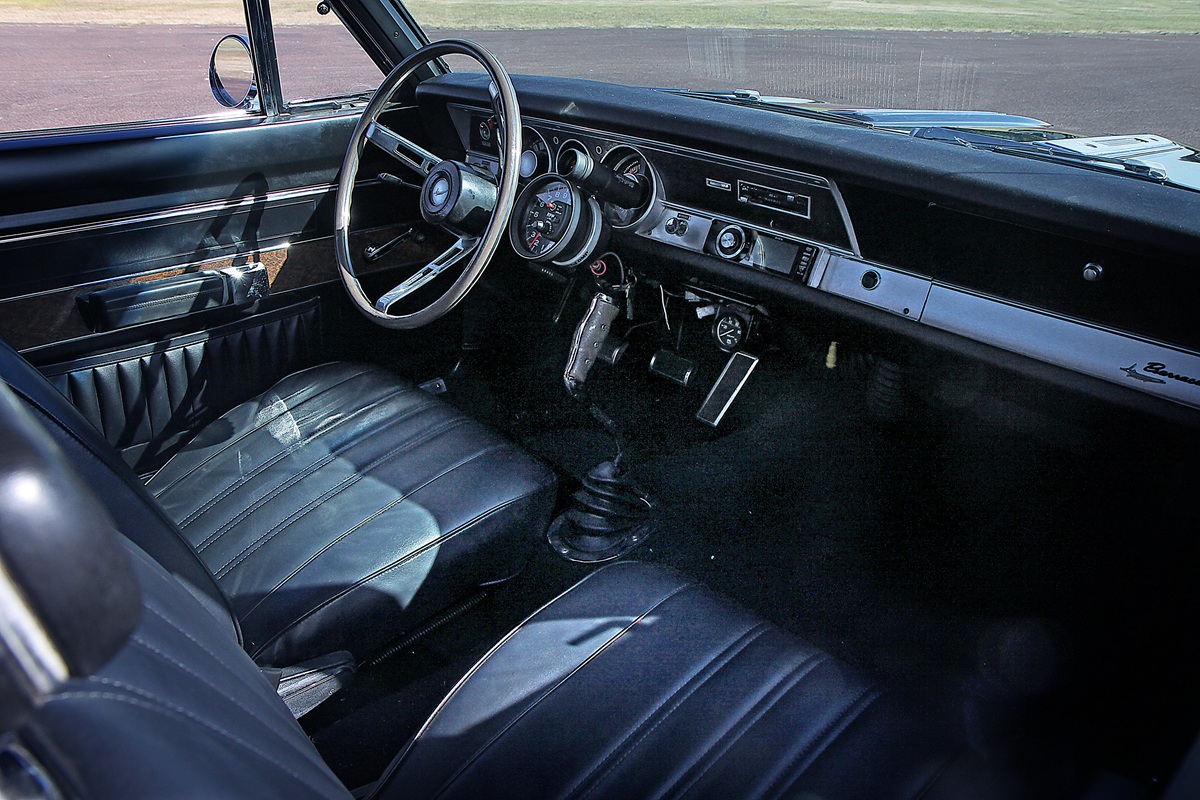
“Can two people fit in the Barracuda?” I asked Skoglund.
“It seats six,” he replies.
Which fits nicely with Skoglund’s stated goal for the car: “A fast ride you can drink a few beers in and have fun with on the street.” Something he and his friends put into practice at Classic Car Week in Rättvik the day before we meet at the Orsa Drag Fest.
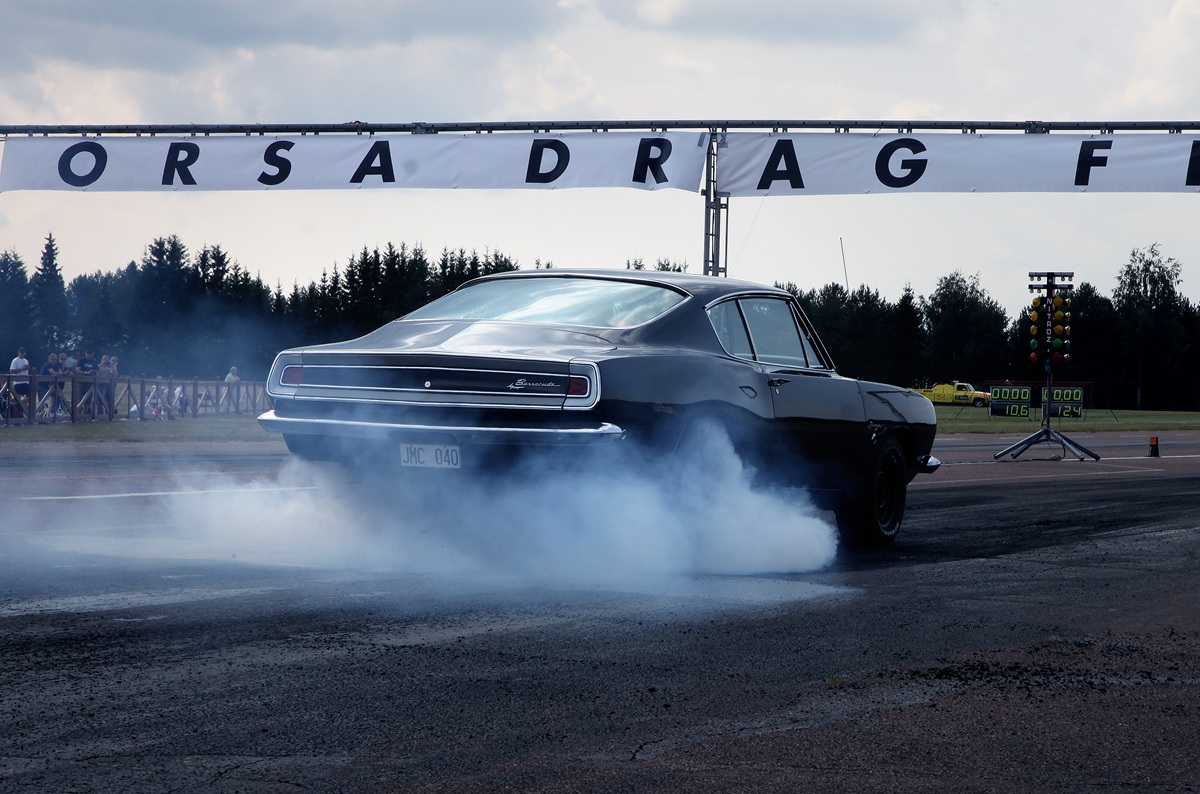
“Though parked at the campground,” he quickly adds.
At the same time, he’s chasing quicker times on the 201-meter drag strip.
“My fastest run is 7.56 seconds over 201 meters at the Linde Open. But the trap speed suggests I should be able to run very low sevens, like 7.12. So yeah, I’m chasing a six,” Skoglund says.
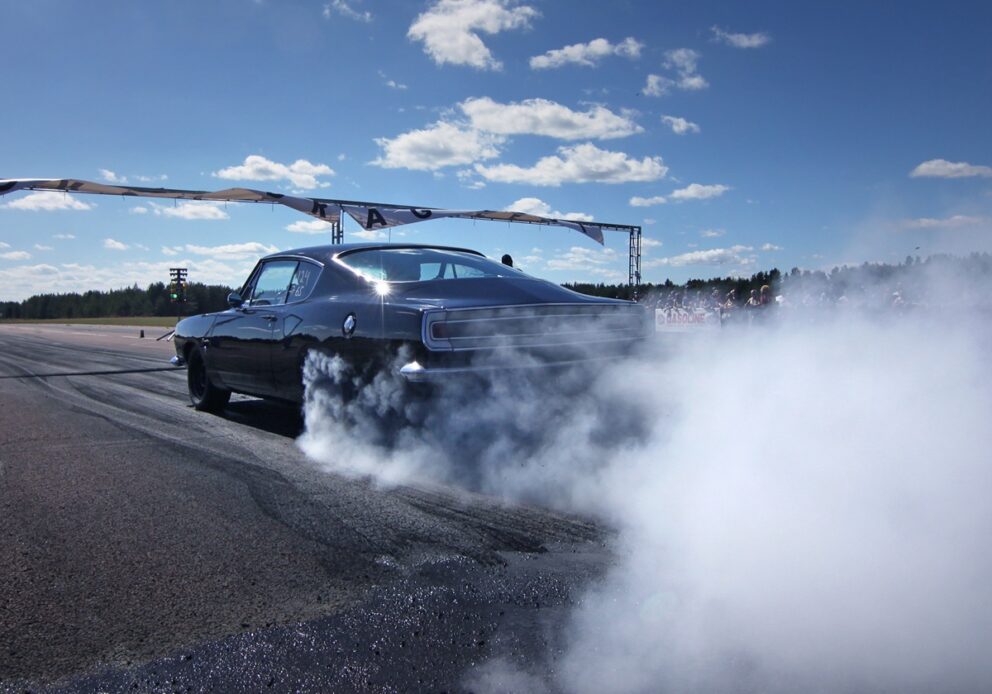
Why he hasn’t hit the low sevens – or even a six-second pass – yet might be due to the tires, and the fact that the transmission is completely stock.
“I bought new tires for the 2012 season, but they probably got ruined early because they were the wrong type. I would’ve needed something with a stiffer carcass,” he says, adding that he’s committed to improvement after the disappointing runs at Linde Open 2013.

New, better tires are on the shopping list for 2014.
“A new, quicker-shifting gearbox will also be installed. Like I said, I’ve had trouble shaving down my strip times because of the transmission. A stock gearbox is a bit sluggish at 6,800 rpm. After corresponding with Passon Performance, with whom I collaborate – and who, by the way, are incredibly professional
and the go-to people for A833 transmissions – they promised to help me build a gearbox that shifts using what’s called ‘Bunny Humping.’ Combined with a slipping clutch, I should be able to hit those six-second passes,” Skoglund says.
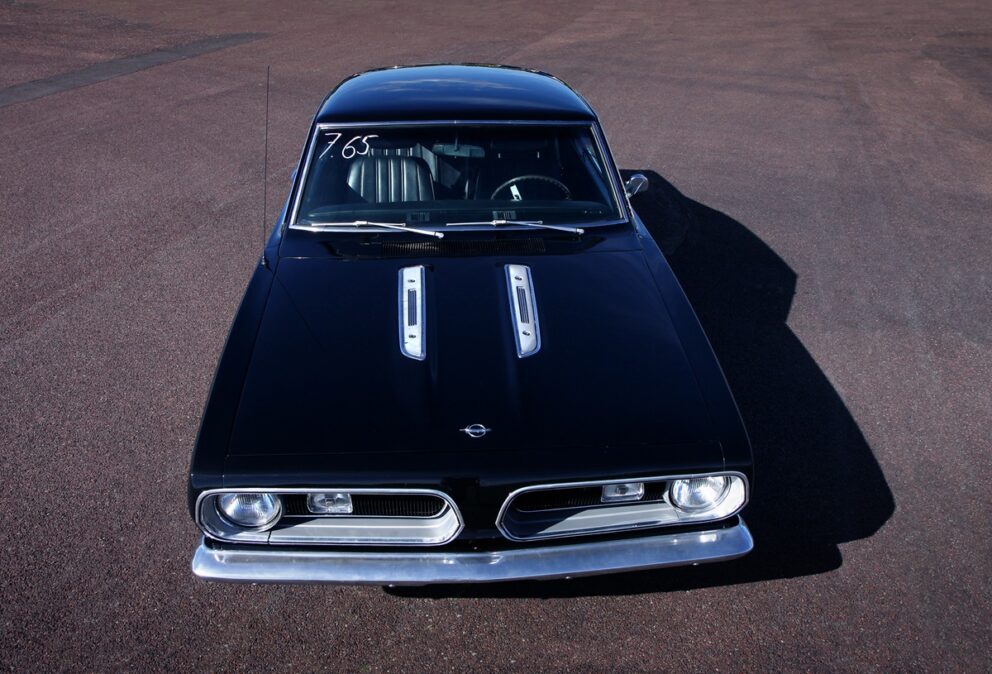
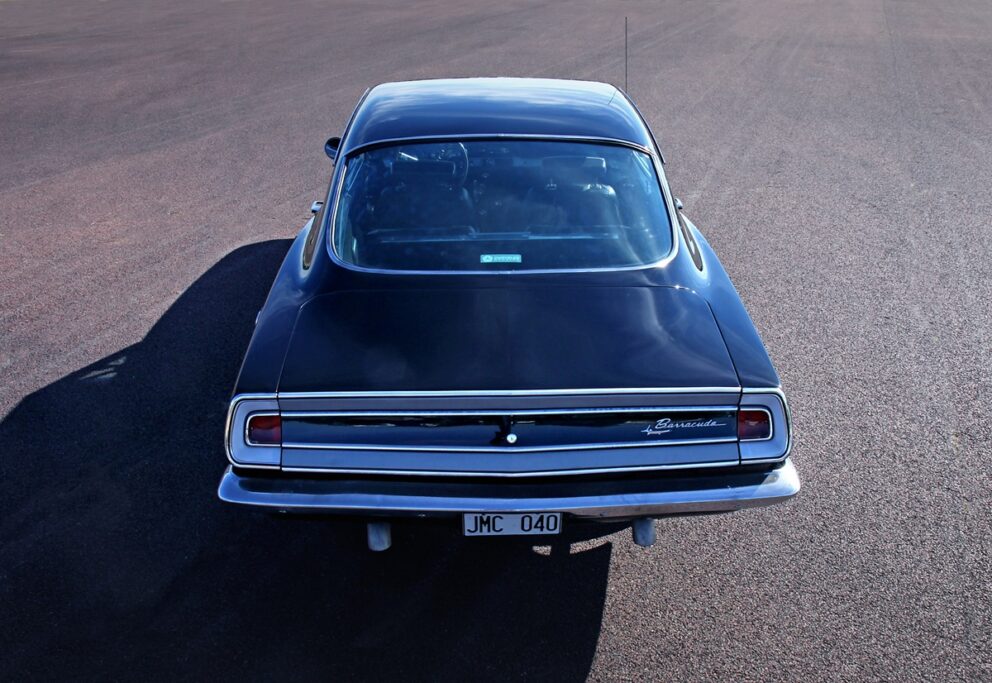
It was 2013 when this story was originally written, and a lot of water has passed under the bridge since. Today, Skoglund races an insanely cool Dodge Dart, which will appear at DodgeGarage in a future feature. The Barracuda was sold six years ago.

The car is now owned by Leif Holm. He’s currently preparing for a minor engine rebuild, as the V8 has started taking in some coolant – possibly a blown head gasket? The goal is to have it back on the road later this year, 2025.
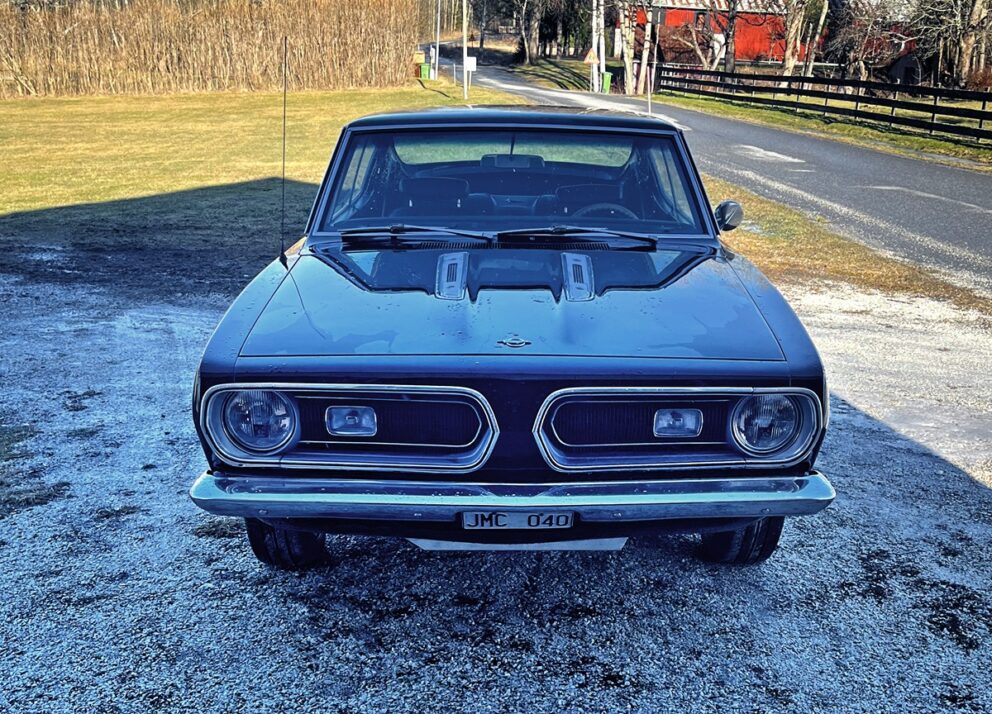
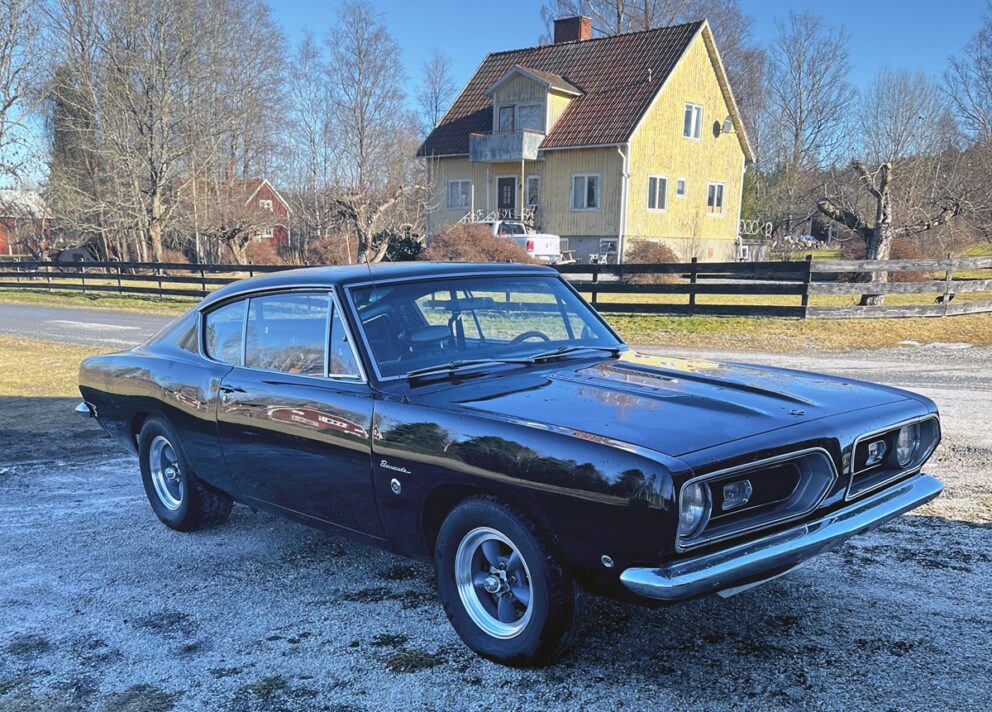
“The Barracuda is my first American classic. I’ve always had a deep interest in cars, but when I was younger, there were a lot of other things to spend money on – kids, a house and so on. But six years ago, I finally had the chance to buy this Plymouth Barracuda. It’s mostly sat in the garage, but I’m hoping to
get it out on the road this summer,” Holm says.


0 Comments